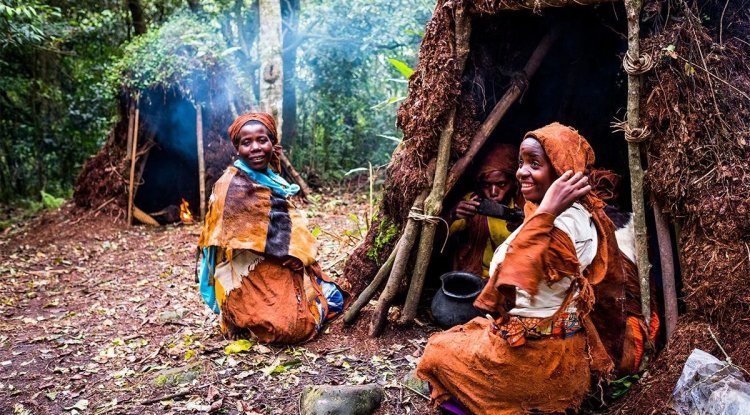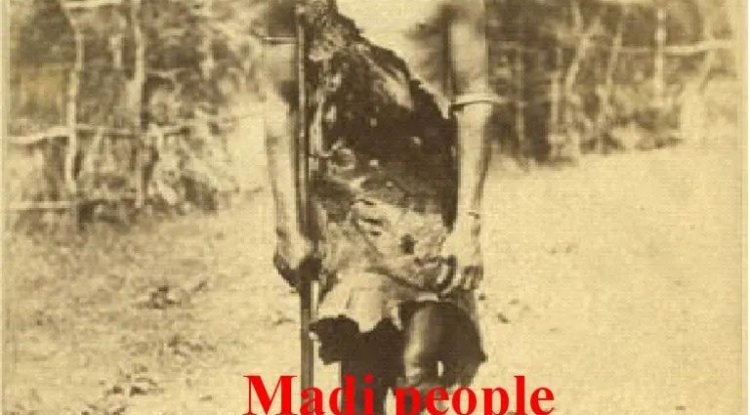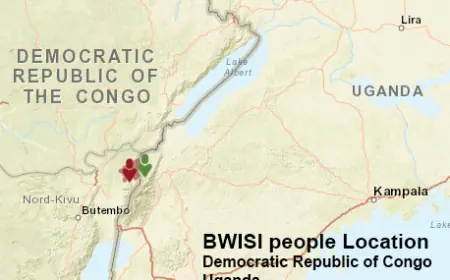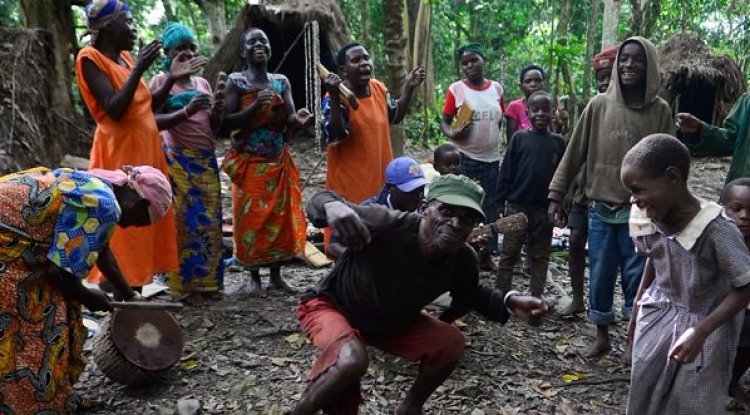The Alur: A Nilotic People of Uganda and the Congo
All Alur kings are referred to as "Rwoth," which means "chief" or "lord" in their language.
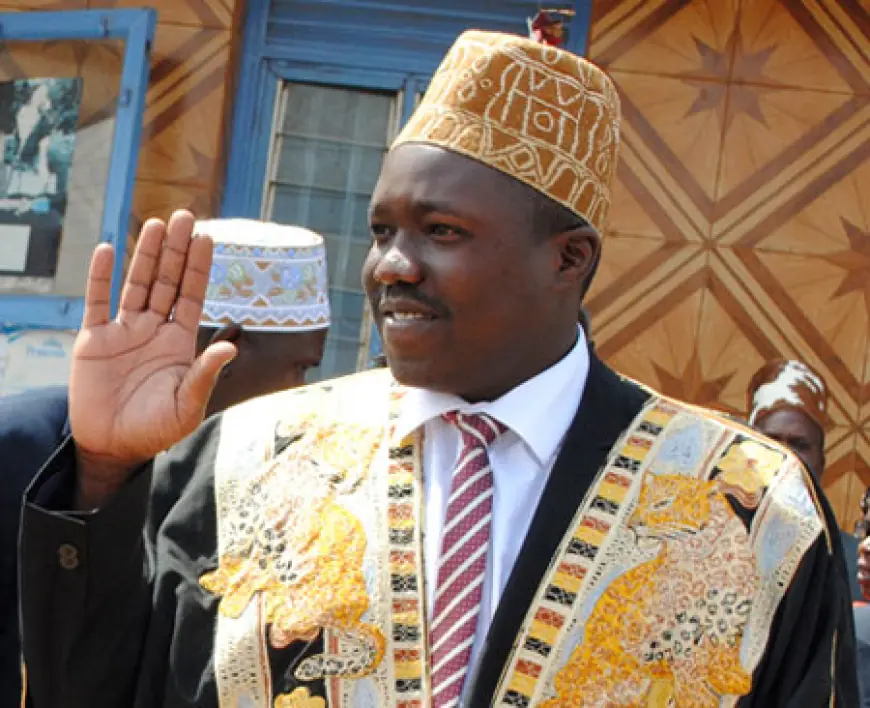
The Alur are a Nilotic ethnic group who live in northwestern Uganda and the northeastern Democratic Republic of the Congo (DRC). They are part of the larger Luo group, and their language is closely related to Acholi and Adhola. Some Alur speak Lendu, a Central Sudanic language, as a result of intermarriage and cultural assimilation.
The Alur have a rich and diverse history, culture, and economy that span centuries and regions. They have faced colonialism, civil wars, and environmental challenges, but have also maintained their traditions, identity, and autonomy. In this article, we will explore some of the aspects of the Alur people that make them unique and fascinating.
Origins and Migration
The Alur are a member of the Luo subethnic group, which is part of the Nilotic ethnic group. They belong to the wider Alur ethnic group that resides in the Congo and Uganda. They started with the Luo migration to northern Uganda in the sixteenth century from Bar-el Gazel in South Sudan.
According to the Acholi and Alur mythology of “Spear and the Bead," also known as the “Story of Nyipir (Gipir) and Labongo," their founding father was Nyipir (Gipir), who was the brother of Labongo, the Acholi tribe's founder. According to the Alur version of the legend, Nyipir (Gipir), one of King Opodo's sons, succeeded his father as the ruler of the Luo after he passed away and the group arrived in Northern Uganda. Gipir (Nyipir) and his brother Labongo split up to form separate tribes.
The Alur tribe was founded by Nyipir (Gipir), whereas the Acholi tribe was formed by Labongo. The Luo were originally pastoralists and fishermen, but they adapted to different environments and adopted new crops and technologies. The Alur, for instance, learned to cultivate finger millet, cassava, maize, beans, and coffee from their Bantu neighbors. They also forged iron tools and weapons and traded salt, fish, and ivory with other communities.
Kingdom and Chiefdoms
The Alur kingdom is probably the only one that was unaffected by the Ugandan ban on traditional monarchies in 1966. All Alur kings are referred to as "Rwoth," which means "chief" or "lord" in their language. The current Alur king is Rwoth Phillip Rauni Olarker, whose coronation was in 2010. He is the supreme ruler of the entire Alur tribe, with his capital at Kaal Atyak Winam, Zombo district, Uganda.
The Alur kingdom is composed of ten chiefdoms, namely: Angal, Juganda, Jukoth, Mukambu, War Palara, Panduru, Ukuru, Paidha, Padeo, and Panyikano. Each chiefdom has its own history, culture, and administration. Some of the chiefdoms are further subdivided into clans, which are based on patrilineal descent. The clans have their own totems, rituals, and taboos.
The Alur chiefdoms have a hierarchical structure, with the king at the top, followed by the chiefs, the elders, the warriors, and the commoners. The king is the political, religious, and military leader of the Alur. He is assisted by a council of advisers, who are chosen from the royal clan or the clan of his mother. The king is also the custodian of the sacred regalia, which include the royal spear, the royal drum, and the royal stool. The king is expected to uphold the laws, customs, and welfare of the Alur. He is also responsible for performing rituals, such as offering sacrifices to the ancestors and the spirits, and initiating the young men into adulthood.
The chiefs are the representatives of the king in their respective chiefdoms. They are appointed by the king from among the eligible candidates of the royal clan or the clan of his mother. The chiefs have the authority to settle disputes, collect taxes, mobilize resources, and enforce the king's orders. The chiefs are also the heads of their clans and have the duty to protect and promote the interests of their clan members. The chiefs are assisted by the elders, who are the senior members of the clan. The elders are the custodians of the clan's history, culture, and traditions. They are also the advisers, mediators, and judges of the clan.
The commoners are the majority of the Alur population and the producers of the Alur economy. They are mainly farmers, herders, fishermen, and traders. They are also the followers of the Alur religion and the practitioners of the Alur art and craft. The commoners are loyal to the king, the chiefs, and the elders and respect the authority and wisdom of their leaders. The commoners are also proud of their Alur identity and cherish their Alur heritage.
Culture and religion
The Alur culture is a blend of the Nilotic and Bantu influences, as well as the influences of the neighboring ethnic groups, such as the Lendu, the Lugbara, the Madi, and the Kakwa. The Alur culture is expressed in various forms, such as language, literature, music, dance, art, craft, dress, cuisine, and architecture.
The Alur language is a Western Nilotic language of the Lwo group. It has several dialects, such as Okoro, Jonam, and Okeodo. The Alur language is spoken by about 2.5 million people, mainly in Uganda and the Congo, but also in some parts of Sudan and Kenya. The Alur language is written in the Latin script and has a rich oral literature that includes myths, legends, proverbs, riddles, poems, and songs.
The Alur music and dance are an integral part of the Alur culture and are performed on various occasions, such as ceremonies, festivals, rituals, and celebrations. The Alur music and dance are characterized by the use of drums, flutes, horns, lyres, harps, rattles, and bells. The Alur music and dance are also influenced by the music and dance of the neighboring ethnic groups, such as the Lendu, the Lugbara, the Madi, and the Kakwa. Some of the popular Alur music and dance genres are Agwara, Dingi-Dingi, Nyoro, and Ruku.
Art and craft
The Alur art and craft are another expression of the Alur culture and are displayed in various forms, such as pottery, basketry, weaving, carving, painting, and beadwork. Alur art and craft are mainly used for functional purposes, such as cooking, storing, carrying, and decorating. Alur art and craft are also used for symbolic purposes, such as representing the Alur identity, status, and beliefs. Some of the notable Alur art and craft items are the Alur necklace, the Alur lyre, the Alur stool, and the Alur mask.
Dressing and dancing.
The Alur dress code is "Adila Lau" for men and "mufunga" (traditionally worn with beads) and Kitenge (contemporary) for women.The "Agwara" dance is one of the many dances performed by the Alur. The Agwara dance is a celebratory dance in which participants blow wooden trumpets. The primary musical instrument of Agwara dance, these trumpets are backed by drums and ankle bells. "NDara, aburaka, aliku" and numerous other dances tailored to specific events are also performed by the Alur. "DhogAlur" is the name of the Alur language.
Food
The Alur cuisine consists of finger millet, cassava, maize, beans, simsim, spinach, shea butternuts, fish, meat, and insects. The Alur cuisine is prepared by boiling, roasting, frying, or fermenting. The Alur cuisine is served with sauces, spices, and herbs.
Popular dishes in Pakwach are salted fish (named "Angara") and tiny deep-fried fish (called "Onangnang"). They cultivate vegetables, sweet potatoes, simsim, cassava, millet, sorghum, and maize. They eat cassava, millet, and sorghum separately as their major foods. "Kwen" is the name for the cassava bread made with "Mogongura" flour. "Kwenbel" sorghum bread is made using sorghum flour, also known as "Mogobel.". Millet porridge and "Kwenkal" bread are made with millet flour. Alur drinks include the cassava beverage "Nguli," the maize beverage "Kwete," and the cassava drink "Lachoi," which is consumed with "useke," a type of straw created locally. In addition, Alurs is known for its "Anyoya," a popular dish made of beans and maize combined with toppings like fried onions and palm or Simsim oil.
Architecture
The Alur architecture is also a reflection of the Alur culture and is influenced by the Alur climate, geography, and materials. The Alur architecture consists of round or rectangular huts made of grass, reeds, poles, and mud. The Alur architecture is designed to provide shelter, comfort, and security. The Alur architecture is also decorated with paintings, carvings, and symbols.
Religion
The Alur religion is a mixture of traditional and modern beliefs, as well as the beliefs of the neighboring ethnic groups, such as the Lendu, the Lugbara, the Madi, and the Kakwa. The Alur religion is based on the belief in a supreme being, called Jok, who created the world and everything in it. The Alur religion is also based on belief in the spirits of the ancestors, the spirits of nature, and the spirits of the dead. The Alur religion is practiced through rituals such as sacrifices, prayers, offerings, and festivals. The Alur religion is also influenced by Christianity and Islam, which were introduced by the missionaries and the traders.
Alur marriage customs
The Alur people have a lovely system in place for getting married. It is forbidden for clan members to get married to one another since it is seen as incest. When a young man reaches adulthood, he recognizes a young lady and arranges for a dowry called "Keny.". In this custom, the bride's parents are paid a visit and given gifts such as cash, goats, and cattle. Following the bride's family's approval of these gifts, a couple of days are spent in delight and celebration for young boys and girls until they return from the bride's village and eventually return "Arusi" to her married residence.
What's Your Reaction?
 Like
1
Like
1
 Dislike
0
Dislike
0
 Love
2
Love
2
 Funny
0
Funny
0
 Angry
0
Angry
0
 Sad
0
Sad
0
 Wow
0
Wow
0





























































